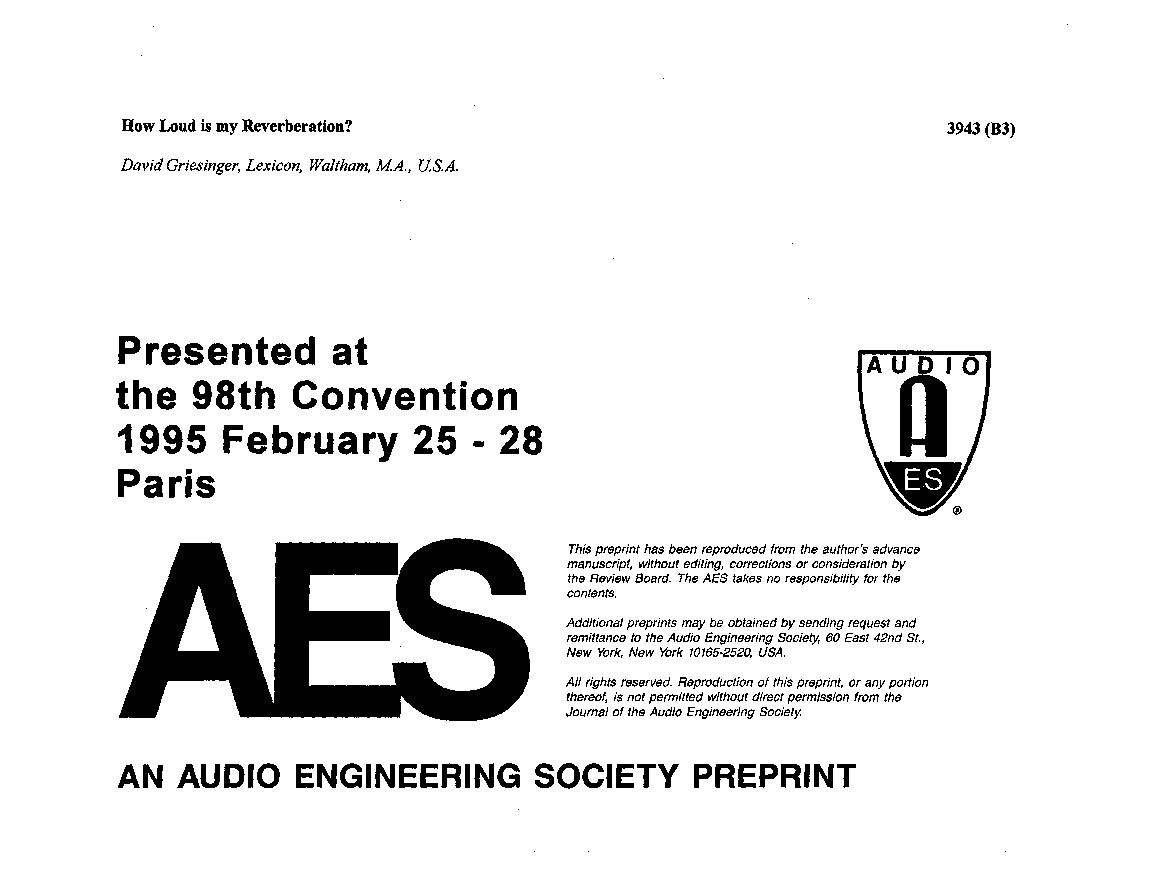Home / Publications / E-library page
You are currently logged in as an
Institutional Subscriber.
If you would like to logout,
please click on the button below.
Home / Publications / E-library page
Only AES members and Institutional Journal Subscribers can download
Knowing the reverberant level is vital in room acoustics, however, it is poorly predicted by conventional measures. The paper presents the results from a continuing series of experiments on the loudness of running reverberation. It also proposes a method for determining the reverberant loudness from a measured impulse response and provides some insight into how : reverberation is perceived. Optimum reverberant levels for music depend strongly on the reverberation decay shape and the degree of musical masking. When masking is high, small changes in reverberant level can have large perceptual effects.
Author (s): Griesinger, David
Affiliation:
Lexicon, Waltham, MA
(See document for exact affiliation information.)
AES Convention: 98
Paper Number:3943
Publication Date:
1995-02-06
Import into BibTeX
Session subject:
Architectural Acoustics
Permalink: https://aes2.org/publications/elibrary-page/?id=7823
(597KB)
Click to purchase paper as a non-member or login as an AES member. If your company or school subscribes to the E-Library then switch to the institutional version. If you are not an AES member Join the AES. If you need to check your member status, login to the Member Portal.

Griesinger, David; 1995; How Loud is My Reverberation? [PDF]; Lexicon, Waltham, MA; Paper 3943; Available from: https://aes2.org/publications/elibrary-page/?id=7823
Griesinger, David; How Loud is My Reverberation? [PDF]; Lexicon, Waltham, MA; Paper 3943; 1995 Available: https://aes2.org/publications/elibrary-page/?id=7823